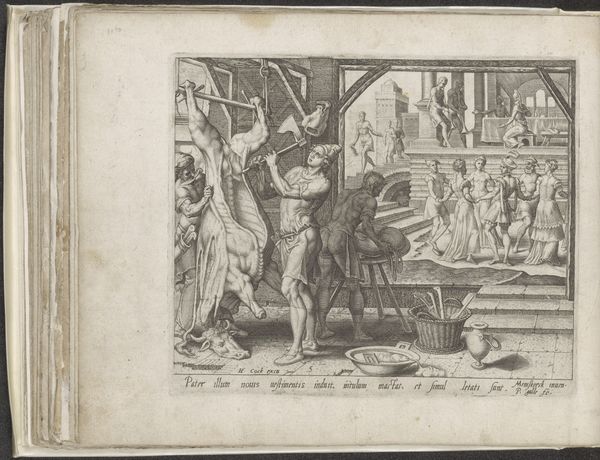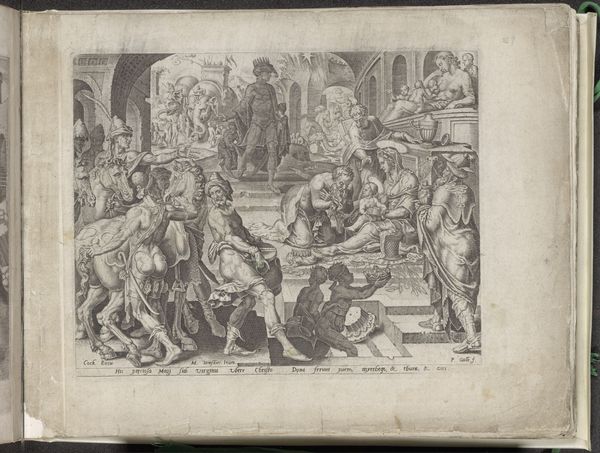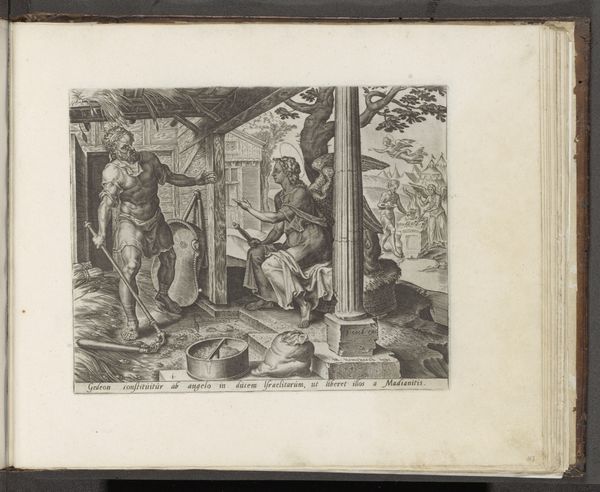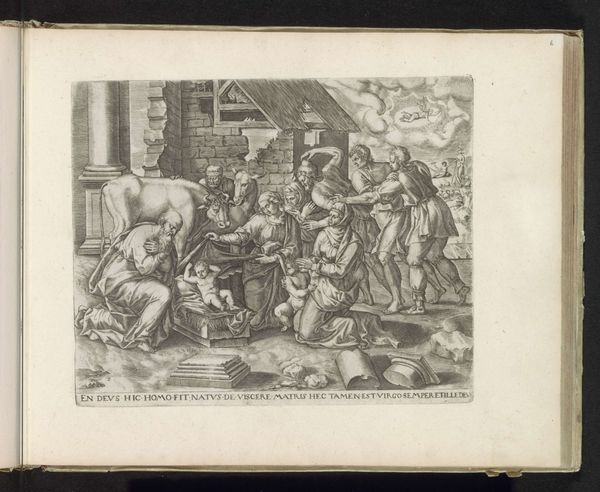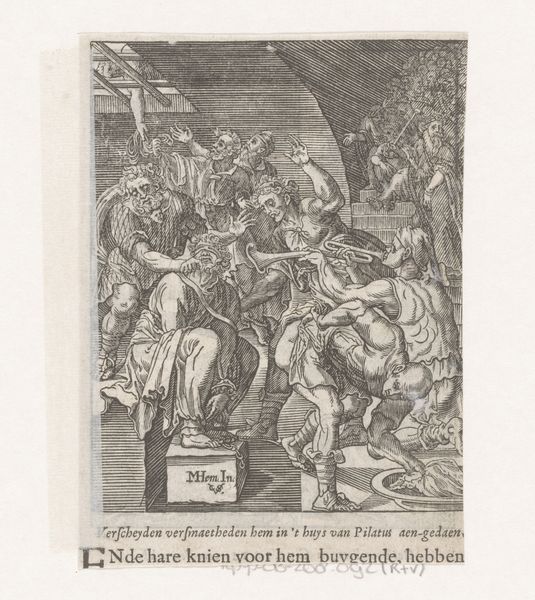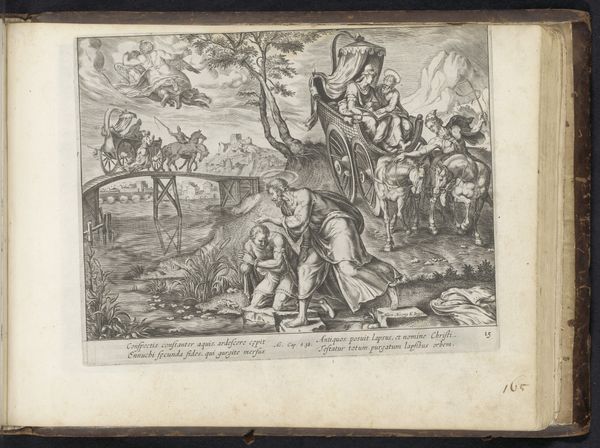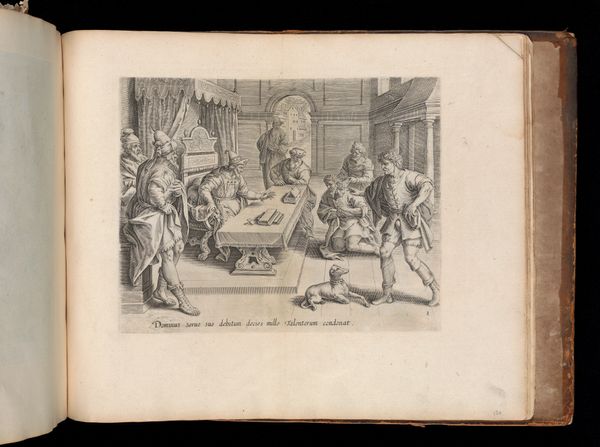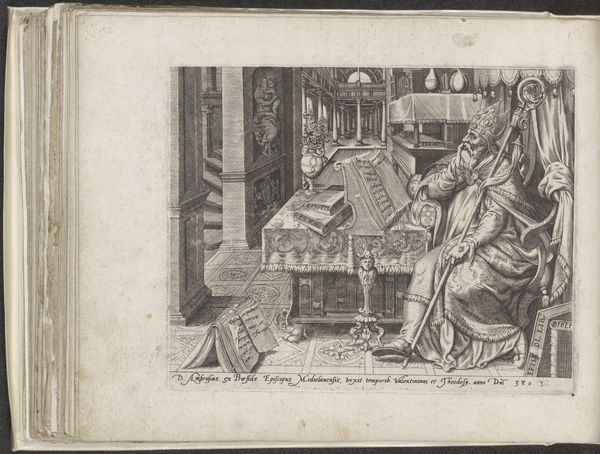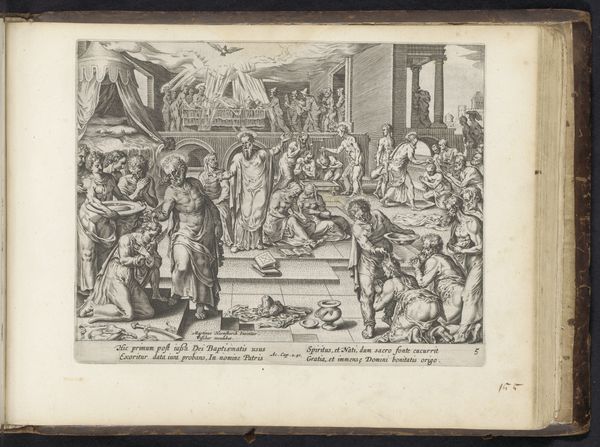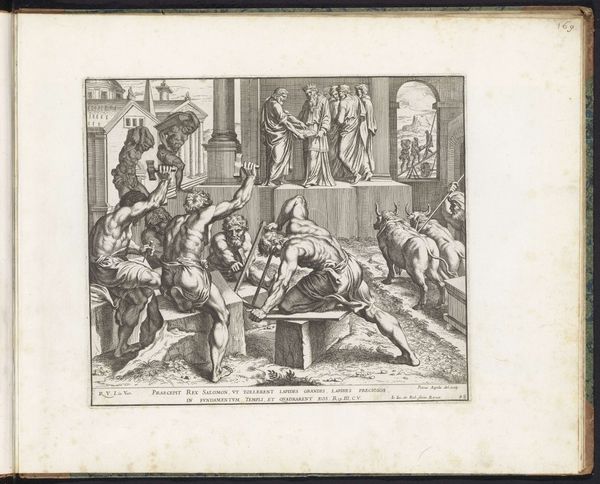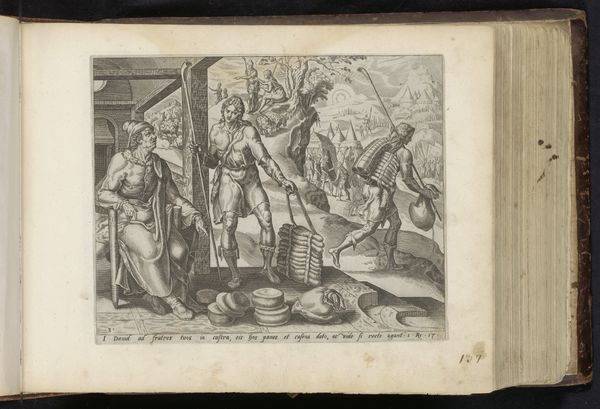
La Vera Perfettione del Disegno di varie sorti di recami, page 2 (verso) 1567
0:00
0:00
drawing, print, engraving
#
drawing
#
narrative-art
# print
#
figuration
#
italian-renaissance
#
engraving
Dimensions: Overall: 6 5/16 x 8 7/16 in. (16 x 21.5 cm)
Copyright: Public Domain
This is a print by Giovanni Ostaus, made around the turn of the 17th century, as part of a book of embroidery patterns. The print depicts the story of Lucretia, a Roman noblewoman, attacked by Sextus Tarquinius, and its title translates to ‘The True Perfection of Design of Various Sorts of Embroidery.’ Embroidery was a critical, gendered skill. Manuals like these served as guides for women, who were often confined to the domestic sphere, while at the same time reminding them of their duty of virtue. Ostaus's choice to depict Lucretia’s assault presents a complicated narrative. Was the image of Lucretia intended as a warning? The visual narrative gives us pause to consider the complex relationship between beauty, violence, and virtue during the Renaissance, asking us to consider the role of gendered expectations in shaping women's experiences. Despite the violence it depicts, it is a powerful reminder of the artistic achievements and cultural values of women in the past.
Comments
No comments
Be the first to comment and join the conversation on the ultimate creative platform.
